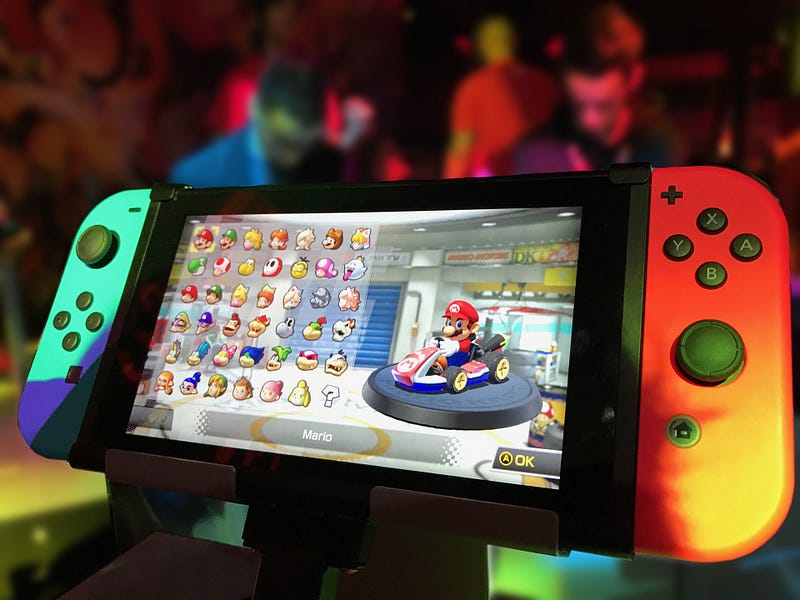By Colin Whaley of the HCI Games Group.

The Nintendo Switch and Nintendo Wii U, despite having similar controllers and even some overlap in game libraries, are such fundamentally different experiences that I’ve bought the same game for it twice. The Switch’s launch commercial shows all manner of multiplayer experiences, including Mario Kart, with a huge focus on local multiplayer experiences; this was so enticing to me that I spent an additional $100 for Mario Kart 8 for the Switch on top of the price I paid for Mario Kart 8 on the Wii U. My purchase was justified, as the two consoles provide two fundamentally different experiences, and Mario Kart 8 is a fantastic example of this distinction.
Nintendo’s 2012 console, the Wii U, had some fantastic games released for it (see: Super Smash Bros. for Wii U, Super Mario 3D World, Splatoon, and of course Mario Kart 8 and The Legend of Zelda: Breath of the Wild), but the console was very much so that — a home console for which transportation to friends’ houses, parties, etc. was labourious and time consuming. The sheer number of components necessary for playing it that had to be lugged around were excessive, and the whole unit felt large and bulky. Much of the Switch’s value proposition rests on exactly the opposite — an easily transportable, slim package, on which multiplayer games can be played with the same minimal equipment needed for single player games. Namely, this is that the controllers (called Joy-Cons) included in-the-box allow for both single player and multiplayer experiences. (I personally, though, use the Surge Joy-Con Grip Kit, an unfortunately-named set of grips allowing for more comfortable use of individual Joy-Cons. They’re a strong purchase for $15.)
This means that I can play multiplayer Mario Kart on-the-go (and/or at a McDonald’s); this is exactly as satisfying as you would expect. The more often I bring the Switch around with me, and due to its small size, this is thankfully easy, the more use-cases, or, if I may, TV commercial-like situations I find myself in. Whether it be on vacation or at the airport or at a picnic with friends, the Switch really is a bring-anywhere unit with an uncanny ability to bring people together. This has made the Switch a large component of my social life this summer, with many friends asking me to bring it along to events.
Future titles seem to be embracing this mentality as well. Psyonix’s indie hit Rocket League boasts numerous multiplayer modes when it will be released for the Switch this Winter, including local multiplayer and cross-network play. Upcoming installments in the Pokémon main series (likely with a focus on local multi-console multiplayer) are other examples of this mobile-first mentality. To that end, there are no shortage of other Nintendo franchises which will no-doubt benefit from this enhanced portability — as The Verge points out, Mario Party and Super Smash Bros. will also be great benefactors of this local-multiplayer push.
I haven’t been this excited about gaming for a while — The Legend of Zelda: Breath of the Wild is an incredible experience in and of itself both on-the-go and and played on a TV, but I think the Switch’s true value lies in being able to prop it up anywhere and play with friends. This is the fundamental distinction between Mario Kart 8 for the Wii U and the Switch — they are different social experiences despite being the same game.
(P.S. Unfortunately my life isn’t like this fan-made commercial.)



Leave a Reply